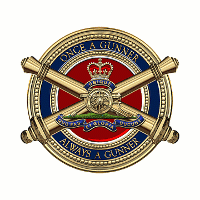- Colonel (Retired) Ian Ahearn OAM
Chair
Chairman, Chair Membership Committee; member Governance Committee
Ian Ahearn has retired to Canberra after a 35 year career in the Australian Army and then 8 years in the information technology industry. He saw active service in South Vietnam with 12 Field Regiment RAA and service overseas with 28 ANZUK Field Regiment in Singapore. He was the Commandant 1st Recruit Training Battalion in 1988/89 and ended his service in Army HQ as Director Information Plans and Policy-Army. He was President of the RAA Association (ACT) from 1991 to 1995, Vice Chairman of the Australian Industry Defence Network 1998/2000, President of the Federal Golf Club 2005/06 and is currently the Colonel Commandant RAA Eastern Region. Ian is a Graduate of the Royal Military College, Army Command and Staff College and the Joint Services Staff College. He holds a Dip Grad – Defence Studies from the University of NSW.
- Lieutenant Colonel Schon Gregory Condon GCSJ, RFD, FCA, FCPA, FIPA, FAICD
Chairman, Governance Committee; member, Finance Committee
Schon Condon is Managing Principal of the Condon Group, former Commanding Officer of 23rd Field Regiment RAA and remains a project Officer within Defence. Schon is currently also the President of the Parramatta Chamber of Commerce.
Schon has a career spanning more than 40 years in the Accounting, Turnaround and Military professions. He is well recognised within the profession as a leading advisor and media spokesperson. His professional role has seen him in numerous leadership and command roles including Chairman Western Sydney Itec Ltd, Senior Vice President Western Sydney Business Connection, Chairman Hawkesbury Business Connection, Chair NSW Public Practice CPA Australia, and President of the Royal Australian Artillery Association (NSW) Inc.
He is a Fellow of the Australian Institute of Company Directors, Fellow of the Institute of Chartered Accountants, and Fellow of the Taxation Institute of Australia. His qualifications include B. Bus (Acc) University of Technology, Sydney; Grad Dip Mgt., University of Canberra, and psc(r) Australian Command and Staff College, Canberra. He is a Registered Company Auditor, a Registered Tax Agent, and a Certified Fraud Examiner, an Official Liquidator appointed by the Supreme Court of NSW and a Registered Trustee in Bankruptcy appointed by the Federal Court of Australia.
- Brigadier John Cox, AM
Chairman, Historical Committee
John served in the Permanent Army from 1968 to 2003, and continues to work as a Reserve Member. He currently specialises in implementing improved governance and management of Defence’s total workforce. He was Commanding Officer of the 8th/12th Medium Regiment at Holsworthy in 1991-1992 and the Director of Artillery 1993-1995. While Director he was Chairman of the Royal Australian Artillery Historical Society. He conceived and led an ‘Australia Remembers’ project to create the ‘Defence of Sydney Monument’ at North Head. John became a Life Governor of the RAAHS/RAAHC in 1993, and he is Chairman of the History Sub Committee of the RAA Regimental Committee. John matriculated from Adelaide Boys High School, is a Graduate of the Royal Military College, the Joint Services Staff College and the Australian College of Defence and Strategic Studies. He is a Doctor of Philosophy (Physics UNSW) and is a lapsed Member of the Australian Institute of Company Directors.
- Lieutenant Colonel Nicholas Floyd
Deputy Chair
Nick Floyd is the Deputy Director, Joint Concepts in Australian Defence Force Headquarters in Canberra. He graduated in 1989 to the Royal Australian Artillery, serving in the 8th/12th, 1st and 2nd/10th Regiments. Post-Staff College, he served in appointments in Army Headquarters, as the Chief of Army’s Visiting Fellow at the Lowy Institute, and as Directing Staff at the Australian Command & Staff College. He has seen operational service in Iraq (2005-6) as Plans Officer with XVIII Airborne Corps in Headquarters Multinational Corps-Iraq; and in Afghanistan (2010) with 6th (UK) Division in Fires & Effects Cell as Chief (Reintegration), Headquarters Regional Command-South. He is a Councillor of the United Services Institute (ACT) (2013--), and President of the Royal Australian Artillery Association (ACT) (2011--). He has a degree in history and post-graduate degrees in defence studies, and in history/archaeology.
- Peter Lawrence
Honorary Treasure and Harbour Trust Liaison
Peter served in the Australian Army for 30 years in field, operational and training appointments. He retired in 1998 and subsequent appointments include implementing quality systems, planning and project managing operations and works at Sydney Airport, and most recently, CEO of the Australian Society of Anaesthetists. Peter commanded 8/12 Medium Regiment in 1989 to 1991 and was an exchange instructor at the Royal School of Artillery, Larkhill, UK and the Canadian Forces College, Toronto, Canada. He holds a Bachelor of Arts and is a graduate of the Australian Army and Canadian Command and Staff Courses.
- Robert Crawford
Honorary Secretary and Chairman Collections Committee
Robert Crawford lives in Sydney and comes from a “Gunner” family, so his association with the Royal Regiment spans his whole life. He has served in the Army since 1985, in both reserve and regular components, as a soldier and officer. He has held a variety of regimental and staff appointments. Robert has also lived overseas in the UK and USA. He has a degree in Human Resource Development from Southern Cross University and a Graduate Diploma of Management in Defence Studies from the Australian Defence College.
- Ron West
Director
28 years in Royal Australian Artillery (RAA) regimental and instructional appointments. Commanding Officer 5/11 Field d Regt RAA, Full Time Duty 1981 3/81 Joint Services Staff College. Attended Joint Warfare & Maritime Courses 1992, TIC and Advanced Operations Courses LWC. President RAA Association QLD 5 years, Vice President 2 years, Secretary from 2007 to current. I support documenting Artillery history and equipment. Throughout this time, I have established a strong network between many RAA members across South East Queensland.
Diploma Applied Chemistry QIT, Certificate in Chemistry QIT, Associate Diploma in Laboratory Management CSU. Lecturer (tablet and capsule formulation)/Scientific Services Manager, School of Pharmacy, University of Queensland, retired 2014.
- Bill Foxall
Director
Bill Served in the Australian Regular Army for over 30 years and retired in in 1998. Since then he has been employed in the Financial Services industry as the General Manager and Company Secretary of the Huntley Group, a company providing investment services and management to companies and individuals. Bill saw active service in Vietnam with 4 Field Regiment and service overseas with 28 ANZUK Field Regiment. Among other Gunner appointments during his service he was an Exchange Instructor at the US Army Field Artillery School, Fort Sill for two years, commanded 102 Field Battery and was Commanding Officer of 4 Field Regiment in 1988/89. He is a graduate of New England University, the Australian Army Command and Staff College and is a Fellow of the Corporate Directors Association of Australia. He has been an active member of the NSW SES for over 15 years.
- James Eling
Director
James Eling is a Victorian based Reservist, having graduated RMC-A in 2006. He has served in a number of Regimental roles in 2/10 Fd Regt, and as a staff officer at HQ 4 BDE. In 2020 he takes up the role of BC of 2/10 Lt Bty. He is the Managing Director of Extreme Networks, and IT and marketing company and he is the producer of The Principles of War, a professional military education podcast. James has a MBA from UQ and a Grad Dip in Applied Finance (Treasury).


